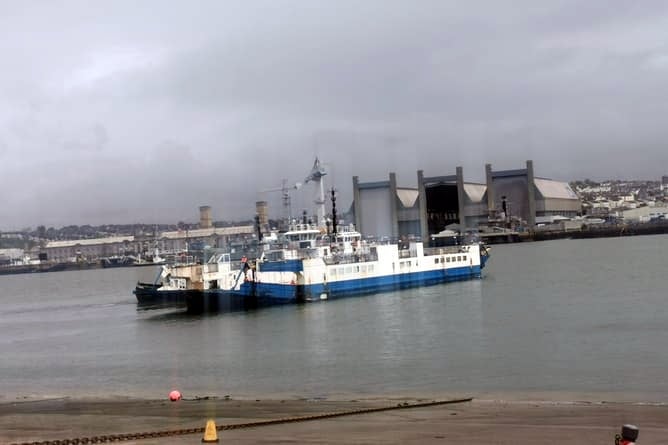Work on the second phase of the project to refurbish the traffic light gantries at the Torpoint ferry is due to begin on Monday (September 9).
It is expected that all works will be completed by October 25.
The steel gantries form part of the A374 and are owned by Cornwall Council. They span the queuing lanes over at Torpoint and the traffic marshalling area at Devonport, contain the equipment and traffic lights used to control and monitor traffic into the queuing lanes and then subsequently onto the ferry slipways on both sides of the river.
Following a survey which found that extensive areas of the protective topcoat on each structure were severely weathered, it was decided to re-coat the gantries at the first available opportunity to minimise the risk of corrosion and maximise the life of the structure.
The first phase at Devonport took place between 19 June and was completed on 31 July 2024.
There will be restricted queuing capacity as lanes will be closed to provide access and ensure safe working areas for contractors.
Traffic signals will not be in operation during the works, and traffic will be managed manually by ferry staff.
The first two weeks will involve the introduction of the traffic management measures and the removal of equipment from each of the gantries.
Work will then take place to prepare and re-coat the structural surfaces, rehouse cables and return the equipment before the power is reconnected. Lane restrictions will be lifted and the gantries will return to full operation after final checks.
“Whilst we recognise that the reduction in queuing capacity in the lanes is likely to create increased congestion in the immediate vicinity of the works, and potentially impact on the wider local road network at certain times, these measures are essential to provide access for the works and manage the safety of the public” said David List, from Tamar Crossings.
“Cornwall Council will be working closely with contractors and key stakeholders, including Torpoint Town Council, transport providers and emergency services throughout the project to keep disruption to a minimum.”


.jpeg?width=209&height=140&crop=209:145,smart&quality=75)


Comments
This article has no comments yet. Be the first to leave a comment.